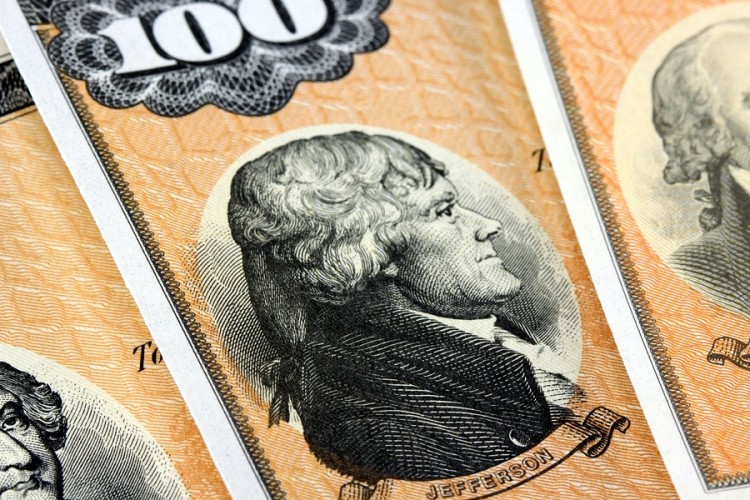The Daily Prophet: Bond Market Havoc Spreads, This Time to Junk

published Mar 13th 2017, 3:30 pm, by Robert Burgess
(Bloomberg View) —
Saying the U.S. junk bond market has been hot would be an understatement. The securities gained slightly more than 17 percent last year as measured by the Bloomberg Barclays U.S. Corporate High Yield Index, one of its best years. And they were tops among the 19 major fixed-income categories tracked.Now, with the Federal Reserve predicted to step up the pace of interest-rate increases starting this week, investors in junk bonds are getting extremely nervous. After gaining a total of 3 percent in January and February, the Bloomberg Barclays index is down 1.10 percent this month through Friday, already making March the worst month since January 2016. Bank of America Corp. analysts said today that its surveys showed that investors were “underweight” the debt for the first time since December 2008. That came after Lipper U.S. Fund Flows data late last week showed that mutual funds investing in corporate bonds rated below investment grade suffered outflows of $2.12 billion in the week ended March 8, the most in months.
OIL PRESSUREDThe losses on junk bonds have been led by weakness in the debt of energy companies, which have suffered as oil prices tumbled 9.1 percent last week, plunging below $49 a barrel. The losses in crude slowed today, but traders are still worried that record U.S. inventories and a boost in drilling activity threaten OPEC’s efforts to reduce a global glut. U.S. crude inventories probably rose by 3 million barrels last week, according to the median estimate in a Bloomberg survey before an Energy Information Administration report on Wednesday. Rigs targeting crude in the U.S. climbed to the highest since September 2015. Kuwait supports extending OPEC’s output cuts beyond June, Kuwait’s official news agency Kuna reported, citing Kuwait Oil Minister Issam Almarzooq.
EMERGING MARKETS SOAR
Emerging-market stocks got a huge boost today from Intel Corp.’s plan to buy Mobileye NV for about $15 billion in the largest takeover ever of an Israeli company. The MSCI Emerging Markets Index jumped 1.29 percent in its biggest gain since early December. And what about the likelihood of a Fed rate increase this week? If the past is any guide, tighter monetary policy in the U.S. may not be all that bad for emerging-markets. In the three years to 2007, when the U.S. central bank was tightening, stocks and currencies of developing nations rallied, according to Bloomberg News’ Lilian Karunungan. A repeat performance is in the cards as faster U.S. growth boosts the earnings of companies in emerging markets, according to Prashant Khemka and Salman Niaz, money managers in Singapore at Goldman Sachs Asset Management.
STERLING SHINES
The British pound has had a tough streak of late, with an index measuring its performance against a basket of major peers falling in 11 of the past 13 trading sessions. Today, though, it was sterling’s time to shine, even though the currency was subject to fresh political risk as Scottish First Minister Nicola Sturgeon signaled the start of the legal process of preparing for a second independence referendum. The Bloomberg British Pound Index jumped 0.57 percent, the most since Feb. 23, in a sign that the currency might have become too cheap to ignore. The call for another independence vote threatens to further complicate the U.K.’s outlook as it prepares to trigger Brexit.
LOANS STALL
Those who say a decision by the Fed to raise interest rates this week would only serve to choke off a weak recovery can support their case by pointing to a sudden slowdown in credit growth. Fed data late Friday showed that commercial and industrial loans outstanding totaled $2.095 trillion as of March 1. That’s little changed from October, and follows a surge of about $166 billion in the previous 12 months. The expected pace of first-quarter GDP growth, as reported by the Atlanta Fed’s GDPNow report, has fallen sharply, from a recent high of 3.4 percent on Feb. 1 to a paltry 1.2 percent as of March 8.
TEA LEAVES
It’s hard to reconcile the sluggish pace of loan growth and the Atlanta Fed’s GDPNow tracker with the seeming unbridled optimism of small businesses. National Federation of Independent Business’s Small Business Optimism has spiked higher in recent months at the fastest pace in its history, jumping from 94.9 in October before the U.S. elections to 105.9 in January, the highest level since 2004. The latest reading comes Tuesday, and the median estimate is for the reading to come in little changed at 105.6 for February. Economists at Bloomberg Intelligence say that although small-business owners are becoming more optimistic and willing to hire, they are finding it increasingly difficult to recruit qualified workers. That could weigh on optimism.
Robert Burgess is editor of Bloomberg Prophets.
To contact the author of this story: Robert Burgess at bburgess@bloomberg.net To contact the editor responsible for this story: Max Berley at mberley@bloomberg.net
For more columns from Bloomberg View, visit Bloomberg view
COPYRIGHT© 2017 Bloomberg L.P







No Comment